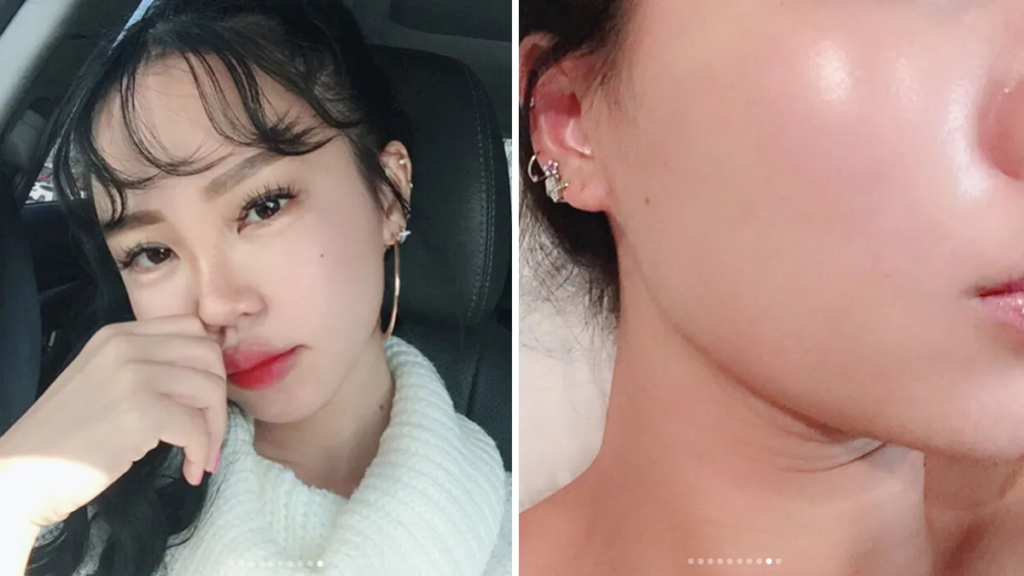For the ones, people combating each-day woes of textured skin, looking to repair that elusive smoothness can once in a while feel like a by-no-means-ending quest. Enter Korean skincare, famous for its meticulous strategies and revolutionary merchandise, which may also just preserve the key to the glowy, gentle pores and skin you long for. This comprehensive guide is crafted to demystify the Best 8 tips for Korean skincare for textured skin, offering a detailed roadmap for your skin transformation. Whether you are new to this precise skincare philosophy or a seasoned enthusiast, arm yourself with these 8 insightful guidelines to refine your pores and skin’s texture and revitalize your complexion.

Understanding Textured Skin
Before we venture into the realm of Korean skincare, it is essential to apprehend the nature of textured pores and skin. Textured skin is characterized by roughness, bumpiness, or irregular skin floor, frequently due to an extra of dead skin cells, dehydrated skin, acne scarring, and enlarged pores. The approach to tackling this condition must holistically cope with exfoliation, hydration, and specific concerns which include acne scars.
The Korean Approach to Skincare
Korean skincare isn’t only a routine – it’s a ritual, a philosophy, and a way of life. At its center, K-beauty focuses on prevention, layering merchandise to address exclusive worries, and consistency over the years. The traditional Korean skincare routine involves a couple of steps, each with a particular motive and benefits for the pores and skin.
8 Essential Steps of Korean Skincare Routine
Traditional Korean skincare habits entail the following eight steps, even though the range of steps can be customized based totally on individual desires:
- Oil Cleansing: Begin with an oil-primarily based purifier to remove makeup and impurities.
- Water-Based Cleansing: Follow up with a water-based totally or foaming purifier to further cleanse the skin.
- Exfoliation: Use a gentle exfoliator to slough off lifeless skin cells, selling cellular turnover.
- Toning: Apply a hydrating toner to stabilize the pores and pores and skin’s pH and to prepare it for the following steps.
- Essence: Its essence is a lightweight and refreshing moisturizer that replenishes the skin’s natural moisture barrier.
- Serum: Add a serum or ampoule to target specific skin concerns, such as texture or blemishes.
- Sheet Mask: This is a great way to put nourishing ingredients into your muscles and skin, and leave it on for 20 minutes.
- Moisturizing: Coat the skin’s moisture with a rich cream or gel for added hydration and protection.
Every step and product in the process plays an important role in treating tattooed skin. Then, we’ll go through each step in detail, finding tips and resources to help you on your way to oily skin.
Step-by-Step Guide to Minimize Skin Texture
If we follow a dedicated skincare routine with an emphasis on gentle effectiveness, our skin can improve. Here’s how Korean skincare can help you repair your skin:
Step 1: The Double Cleanse
The double cleanse is the indispensable first step within the Korean skin care regimen, successfully eliminating impurities with out stripping the pores and skin. This method begins with an oil-based cleaner, accompanied by the aid of a water-primarily based one. For textured pores and skin, search for:
- Oil Cleansers: Those with gently cleansing ingredients like seaweed oil and acids, and antioxidant oils like green tea extract.
- Foam Cleansers: Formulas including salicylic acid to aid in gentle exfoliation and keep breakouts at bay.
Double cleansing guarantees that each makeup, sunscreen, and excess oil are thoroughly eliminated, setting the stage for powerful skincare product absorption.
Step 2: Exfoliation
Exfoliation is prime to an easy skin texture. However, for people with textured skin, harsh scrubs can do more harm than exact. Opt for chemical exfoliants, which include:
- AHA (Alpha Hydroxy Acids): For dry skin, AHA in the form of glycolic and lactic acid can be beneficial.
- BHA (Beta Hydroxy Acid): Salicylic acid can penetrate oily skin and work through the sebum that can clog pores.
Include exfoliation into your routine 2-three times every week to start, and steadily increase to greater frequent use as your skin will become accustomed.
Step 3: Hydrating Toner
In the Korean skincare routine, toners are not astringent but hydrating. They help rebalance the skin while prepping it to absorb the upcoming treatments. For textured skin, select toners that deliver crucial substances to smooth the dermal layer, like:
- Hyaluronic Acid: Known for its capacity to preserve as much as one thousand times its weight in water, plumping and hydrating the skin.
- Ceramides: These lipids assist retain moisture and strengthen the pores and skin barrier.

Customizing Your Korean Skincare for Textured Skin
Everyone’s skin is specific, so being capable of customizing your recurring is essential. Here’s how you may tailor each step to make it your personal:
Step 4: Essence and Serum
Serums and essences are where you can laser-focus on your skin’s specific concerns. Addressing textured skin might involve products with:
- Niacinamide (Vitamin B3): A multifaceted factor that improves skin texture and decreases the arrival of pores.
- Cosrx Advanced Snail 96 Mucin Power Essence: A customer favorite is known to moisturize and repair the skin.
Apply your serum and essence from the thinnest to the thickest layer, allowing for absorption before applying any product to the next.
Step 5: Sheet Masks
Sheet masks are a way to deliver active ingredients to your skin. For textured skin, choose a mask:
- Centella Asiatica: This soothing ingredient can help repair damaged skin and prevent scarring.
- Hyaluronic Acid: Sheet masks containing hyaluronic acid can also increase hydration.
Use a sheet mask 1-2 times a week for additional treatments in line with your routine.
Step 6: Moisturizing
The right moisturizer can have a significant impact on the texture of your skin, providing a final layer of hydration and protection. Ingredients to look for include:
- Ceramides: For their barrier-strengthening properties.
- Centella Asiatica (Cica): A popular factor in K-splendor for its calming and repairing advantages.
Don’t forget to hydrate morning and night, adjusting the formula based on your skin’s needs each season.
Step 7: SPF
Protect your skin with sunscreen every day, as UV rays can aggravate sensitive skin. At K-Beauty, SPF is considered the last step in your routine, necessary to prevent further damage and maintain your new, smooth complexion
Step 8: Weekly Treatments
Incorporate weekly remedies into your habits to give your skin an extra increase. Treatments can encompass:
- Sleeping Masks: Like the Laneige Water Sleeping Mask that works overnight to hydrate and repair your skin.
- Peeling Gels: These enzymes are used to ‘remove’ dead skin cells from the surface, leaving the skin smoother.
Balancing the right products and their usage frequencies will be crucial in progressively improving your skin’s texture. Note that results may take time and consistency is key.
Comparison of Common Korean Skincare Products for Textured Skin
We’ll now compare some popular Korean skincare product categories and recommend products that cater to textured skin:
\[Table of product categories and recommended products]
FAQs about Korean Skincare for Textured Skin
By now, you might have some burning questions. We’ve got you covered with these frequently asked questions:
How Long Will It Take to See Results?
The time it takes to see results varies from person to person, but you will generally begin to see an improvement in your skin within a month of consistent use
Can K-Beauty Products Actually Improve My Skin Texture?
Yes, with the right mixture of products, Korean skincare can enhance the texture of your pores and skin. The emphasis on gentle exfoliation, hydration, and targeted treatments can remodel your pores and skin’s average appearance.
Is It Possible to Over-Exfoliate My Skin with a Korean Skincare Routine?
It’s honestly feasible to over-exfoliate if you’re the use of exfoliants every day. Be conscious of the way your pores and skin is reacting and regulate the frequency of exfoliation as needed.
How Should I Transition to a Korean Skincare Routine?
The transition to a Korean skincare routine should be done gradually. Start by incorporating a few basics and steps, then develop into a complete routine as your skin adjusts.

Conclusion
Tanned skin can be an ongoing issue, but with care using the right products found in the Korean skin philosophy you can achieve smooth and supple skin If you eat that diet this perfect yet smooth extension will create a calming, resilient skin barrier, and will slowly but surely progress your beauty goals. Remember, the key is in the details—making the right choices, optimizing the steps, and maintaining a consistent process. With these 8 tips Korean skincare for textured skin.

2 thoughts on “Best 8 tips for Korean skincare for textured skin”
Comments are closed.